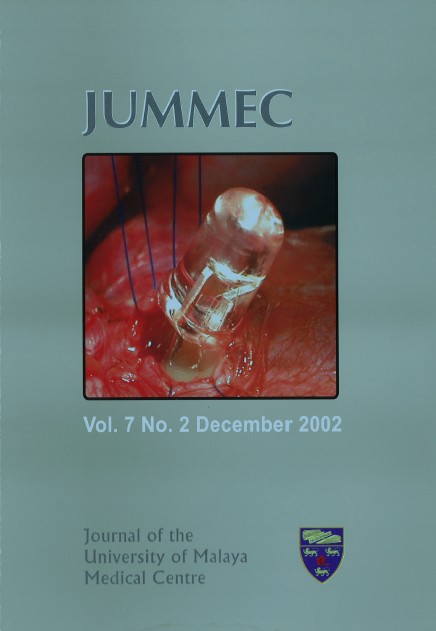Experimental Larval Infestation of Zebu Cattle and its Crosses: Effect of Anti-histamine Alone or in Combined with Dexame-thasone Treatment on the Engorgement and Oviposition, and on Tick Feeding Lesion
Abstract
ABSTRACf: Four calves from each group of purebred Kedah kelantan (KK), halfbred
KK X Friesian, and quarterbred KK X Friesian were experimentally infested with
Boopilillls ",icropills larvae. Two calves from each genotype were injected,
intramuscularly with antihistamine while the remaining two animals in each genotype
received the same dose of antihistamine and dexamethasone. Dexamethasonecombined
anti-h.istamine treatment suppress tick resistance as manifested by the production of
higher number of engorged female ticks, higher mean weight of replete ticks, mean
weight of eggs and mean number of larvae hatched from 1 g of eggs. In anti-histamine
treated animals there was no reduction of resistant in all animals as manifested by a
few ticks were able to feed successfully. At 1, 2, and 3 hours post-larval attachment in
anti-histamine and dexamethasone treated cattle there was complete ablation of the
cellular infiltration in the dermis beneath the tick mouthparts, especially eosinophil
and basophils. There was liNle destruction of tissue. However, in anti-histamine t
reated cattle there were more cellular infiltration and degranulation in the dermis. The
cells infiltrating the dermis were mainlyeosinophils followed by neutrophs, mast cells
and basophils and some of these cells showed sign of degranulation. At 24 hours postlarval
attachment, animals lTeated with anti-histamine and dexamethasone showed
reduction of, cellular infiltration, degranulation, size of the epidermal lesion and tissue
damage. The neutrophils were the predominant cells within the epidermal lesions.
However, animals in anti-histamine treatment showed edema, more cellular infiltration
and degranulation, and destruction of tissues as compared to antihistamine and
dexamethasone treated animals. In anti-histamine treated cattle the epidermal lesions
were obviously larger and the percentage of eosinoph.i1s and basophils were higher
than those of antihistamine and dexamethasone treated animals.
Downloads
Downloads
Published
Issue
Section
License
All authors agree that the article, if editorially accepted for publication, shall be licensed under the Creative Commons Attribution License 4.0 to allow others to freely access, copy and use research provided the author is correctly attributed, unless otherwise stated. All articles are available online without charge or other barriers to access. However, anyone wishing to reproduce large quantities of an article (250+) should inform the publisher. Any opinion expressed in the articles are those of the authors and do not reflect that of the University of Malaya, 50603 Kuala Lumpur, Malaysia.


